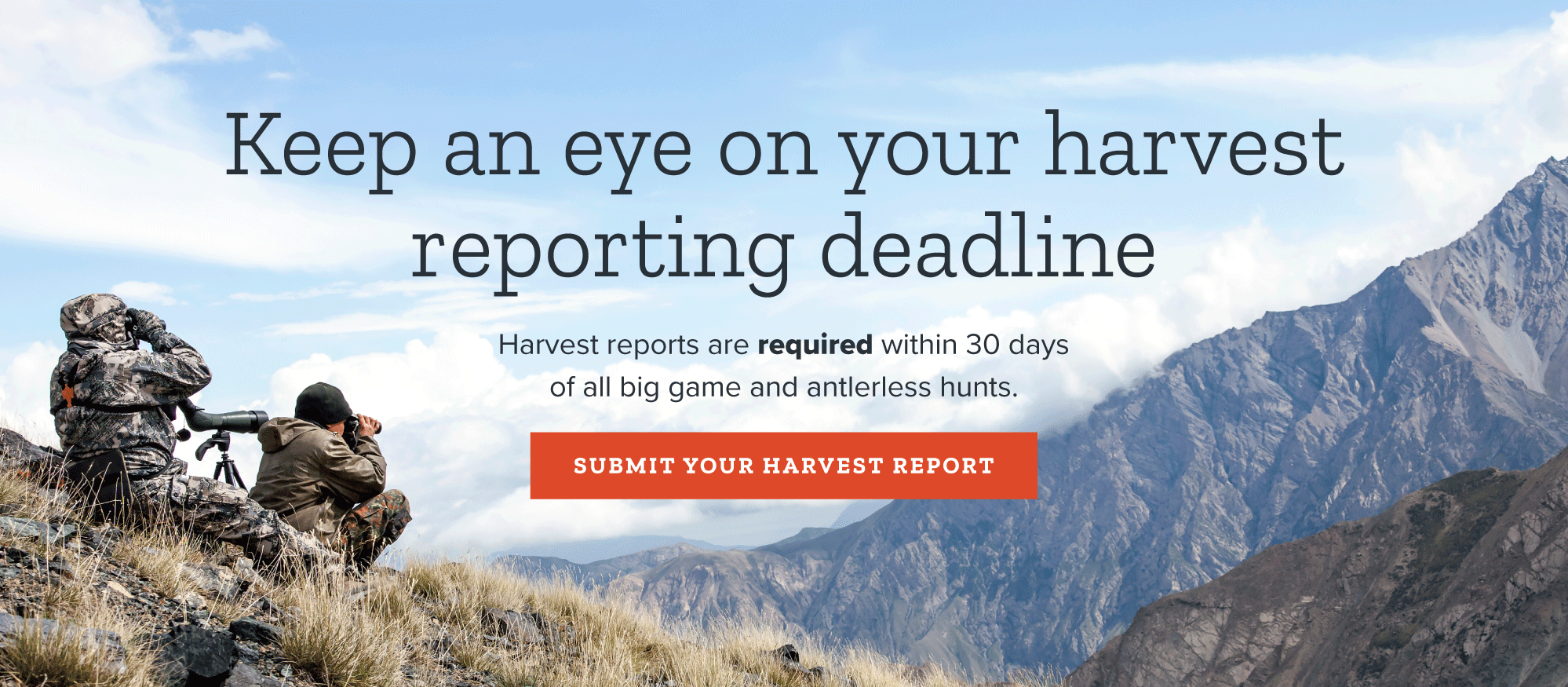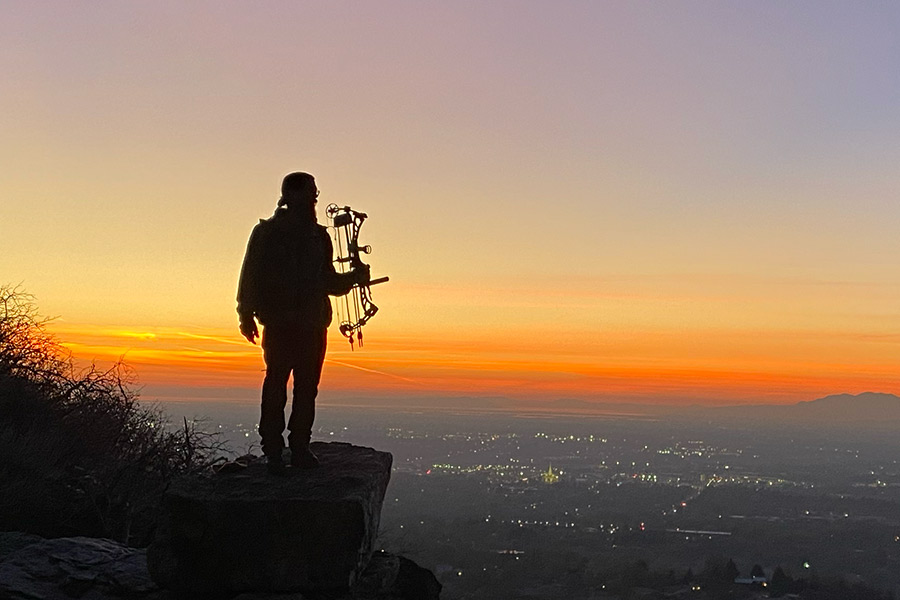Planning to archery hunt this fall? How to prevent injuries and prepare for a safe, successful hunt
Salt Lake City — The general-season buck deer archery hunt and the general spike and any-bull elk archery hunts are the first big game hunts of Utah's fall season, and they all begin Saturday, Aug. 19. If you will be archery hunting this fall, there are several ways you can prepare for the hunt and stay safe while out in the field.
While archery hunting doesn't involve firearms, it does present some unique risks that hunters should be aware of. Here are some safety tips and other helpful information for those archery hunting in Utah this fall:
Safety guidelines
Tree stand safety
Before placing a portable tree stand in a tree, be sure to check the stand's weight rating. Make sure it will support both your weight and the weight of your equipment.
"Hunters sometimes forget to factor in the weight of their equipment," Utah Division of Wildlife Resources Hunter Education Program Manager RaLynne Takeda said. "If the combined weight of your body and the equipment is greater than the weight the stand can support, it could easily collapse, sending you and your gear to the ground below."
Another risk is falling while you're climbing the tree or falling from your stand, once you reach it.
"Before you start climbing, attach a safety harness (also called a fall arrest system) to yourself and the tree," Takeda said. "Keep it attached until you're on the ground again."
Another risk is trying to carry your equipment with you, as you climb a tree. You should instead attach a haul line to your equipment, leaving plenty of slack in the line. Then, attach your safety harness to the tree and start climbing, holding the haul line in one hand or tied to your belt. After you're on your stand, use your haul line to lift your equipment to you.
Hunters should remember that it is illegal to build a tree stand on land managed by the U.S. Forest Service or the Bureau of Land Management. Only portable stands can be used in those areas.
Don't leave your arrows uncovered
Broadhead arrows are extremely sharp, so it is a risk to carry one in your hand or nock one in your bow before you're ready to shoot. Do not remove arrows from your quiver until it's time to shoot.
"Every year, we receive reports of hunters getting injured falling from trees or jabbing themselves or other hunters while carrying arrows in their hands," Takeda said. "It only takes a few seconds to remove an arrow from a quiver, nock the arrow and shoot it," Takeda said. "The few seconds you'll save by carrying arrows in your hand or nocked on your bow aren't worth it."
Know your target
Never take a shot at a deer or an elk that is beyond the maximum range you're comfortable shooting. Also, before you release your arrow, make sure of your target and what's beyond it.
"Arrows, especially carbon arrows, can hit with great force at distances as far as 100 yards from the point of release," Takeda said. "You must know what is behind your target and make sure to never shoot where a road is in the background."
"We address and take very seriously any violations that can affect the public's safety in the field and that detract from the overall quality of the hunting experience," DWR Law Enforcement Capt. Chad Bettridge said. "Many of those violations include things like loaded guns or unquivered arrows in a vehicle, youth not using a helmet while driving an off-highway vehicle, or anyone driving off-road or under the influence."
Preparation tips
There are also some things that archery hunters should know and practice before heading into the field. Here are some basic preparation tips:
Check your equipment
Make sure the laminations on your bow are not flaking or separating, and make sure the strings on your bow are not fraying. If you have a compound bow, make sure the pulleys and cables are in good shape. Also, make sure your arrow's spline (the stiffness of the arrow's shaft) matches your bow's draw weight. If your bow's draw weight produces more force than your arrow can handle, your arrow could fly off target or even shatter or break as you release it.
Carefully sharpen your broadhead arrows
When you sharpen your broadheads, take your time, and be careful. Your broadheads need to be razor sharp before you go out into the field. But make sure you don't cut yourself while sharpening them.
Practice shooting as much as possible
When practicing with a bow, use the same broadheads you'll use during the hunt so you become familiar with them. The DWR has two public shooting ranges that are great places to practice before the hunt.
Get permission
You must obtain written permission from private landowners before hunting on their property or using their property to access public land. If you can't obtain written permission, find another access point to your hunting unit.
Know the boundaries
Do some advance scouting and become familiar with the area you will be hunting. Make sure you know the boundaries of nearby limited-entry units and other restricted lands in the area. If you're hunting near private property or along the hunting unit boundary, do not cross into those areas to retrieve an animal without getting the proper permission from the landowner or help from a conservation officer.
Be careful in popular outdoor areas and follow all laws
Make sure you're well beyond the minimum distances you must maintain from roads and dwellings. Many local municipalities have restrictions on the discharging of firearms or use of archery equipment within city limits. Please know and understand those restrictions. If you're going to hunt in Salt Lake County, note that the county's hunting restrictions are more restrictive than those in the rest of Utah. Be familiar with where you can and can't hunt before you head into the field.
Take the DWR's bowhunter education class
While you are not required to take this course to bowhunt in Utah, it is a helpful resource for beginners and experienced hunters alike. It teaches bowhunting safety, ethics, hunting methods and more. You can take the course online or in an instructor-led class. Learn more about the class and sign up to take it on the DWR website.
Visit the Utah Hunt Planner
This free, useful resource includes notes from the biologist who manages the unit you're going to hunt, general information about the unit, and safety and weather items to be aware of for your particular area. Information about the number of bucks on the unit, compared to the number of does, is also listed. You'll also find maps that show the unit's boundaries, which land is public and private, and the various types of habitat found on the unit. You can find the Hunt Planner page on the DWR website.
Know what to do once you take a shot
Watch the animal and determine the direction it took. Then, go to the spot where you last saw the animal and find your arrow. If there's blood on it, and if you have a compass, take a bearing on the direction the animal went. Then, wait 30 minutes before tracking it. If you track the animal too soon, you can spook it into running. If you wait at least 30 minutes before tracking it, most of the deer and elk you shoot will be found dead within a reasonable distance of your starting point, saving you a lot of time and hiking.
Hunters should also know that, new this year, you must physically check the area where you shot at an animal to see if the animal was killed or wounded before you leave the area.
Tracking the animal
When you track an animal, look for blood not only on the ground, but also on the brush. If you begin to lose the animal's trail, tie a piece of biodegradable marking tape near the last blood spot. Then, search for the animal's trail by walking a circular pattern out from the tape. The tape will serve as a marker that will let you know where you started. Also, tying tape at the locations of the last three or four blood spots you see and then standing away from the tape and looking at the trail can help you visualize the direction the animal went.
Finding the animal
Once you've found the animal you shot, check to see if its eyes are open. If they're not, the animal probably isn't dead. If its eyes are open, touch one of the eyes with a long stick. If the animal is still alive, touching one of the eyes with a long stick will keep you out of harm's way and alert you to the fact that it's still alive. Once the animal is dead, field dress and cool the meat immediately. Temperatures are usually warm during the fall archery hunt, which can cause the meat to spoil quickly.
A new requirement this year for hunters is that if you do harvest an animal, you must harvest the meat from the front quarters, above the knee; from the hind quarters, above the hocks; and along the backbone — between the neck and hind quarters — including the loins and tenderloins.
Learn about fire restrictions beforehand
Check to see if campfires are allowed in the area where you'll hunt. Due to the extreme drought conditions, campfires are not allowed on many public lands this year. If campfires are allowed and you use one, make sure it's completely extinguished before you leave it. Pour water on the fire, stir it, add more water and stir again until it is cold to the touch. If it's too hot to touch, it's too hot to leave. Visit the Utah Fire Sense website for more fire safety tips.
Research about scheduled prescribed burns in your hunting unit
If your hunting unit includes land managed by the U.S. Forest Service or by the Bureau of Land Management, you should be aware that these agencies will occasionally have prescribed fires in an area in order to reduce wildfire risks and to improve habitat. Sometimes these prescribed burns may occur during a hunting season. Check with the managing land agency in advance to see if a prescribed burn may be taking place on your hunting unit.
Know the rules in the Big Game Field Regulations Guidebook
Make sure you are familiar with all the rules before you go hunting. You can get a free copy of the 2023 Utah Big Game Field Regulations Guidebook at any DWR office or on the DWR website.


















